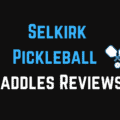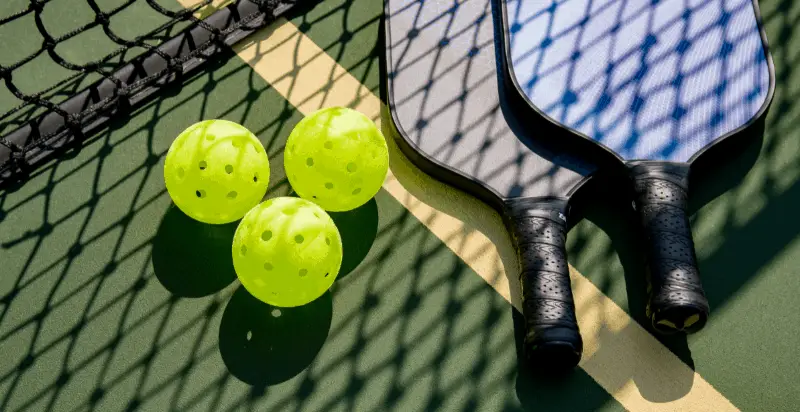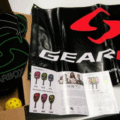Pickleball has been growing in popularity in recent years but it was actually created in 1965 in Washington State. It became popular because it is like tennis but on a smaller court and with less expensive equipment. So it is much easier and cheaper to install a Pickleball court in your backyard. Pickleball is played with a plastic ball that has holes and often wooden paddles.
The rules of pickleball are simple and it is an easy game for beginners to learn, which has been a big factor in its popularity. Still there are some terminology that can confuse beginners. The goal of this article is to give you greater confidence on the Pickleball court. This will help you become more fluent with the pickleball lingo and enjoy the game more.
Pickleball Terminology
Pickleball Gameplay Terms
Ace: An ace is a serve that is not returned by your opponent.
Backhand: A backhand stroke is made on your non-dominant side. You know it’s a backhand hit when the back of your hand is facing the net as you hit the ball.
Cross-Court: The court diagonally opposite your court. When serving, you must hit the ball cross-court to your opponent.
Dead Ball: A dead ball is called after a fault.
Dink Shot: A dink shot is a soft and controlled shot that is intended to move downward shortly after it clears the net, landing in the no-volley zone (ideally at your opponent’s feet).
- TIP – This slow-moving shot can be an effective weapon that you should strongly consider adding to your game.
Double-Bounce Rule: The double-bounce rule dictates that when the ball is served, the receiving team must let it bounce once before returning, and then the serving team must let it bounce once before returning. (Thus, two bounces.)
Double Bounce: A double bounce is when the ball bounces twice on one side of the court. A double bounce is a fault.
Double Hit: A double hit is when the ball hits a player’s paddle twice before going over the net. If a double hit is the result of one continuous motion (meaning, without a second swing or push), it is technically a legal hit.
Drop Shot: A drop shot is a groundstroke shot that falls short of the opponent’s position.
Fault: A fault is any action that stops play because of a rule violation. A fault by the receiving team results in a point for the serving team; a fault by the serving team results in the server’s loss of serve or a side out.
Forehand: A forehand stroke is made with your dominant forearm is facing forward. This is typically the most comfortable and natural stroke.
Groundstroke: A groundstroke is made just after the ball bounces off the ground.
Half Volley: A half volley is a groundstroke shot where the paddle contacts the ball immediately after it bounces from the court and before the ball rises to its potential height.
Let: A let is a serve that hits the net and lands in the proper service court. Let serves are replayed.
Lob: A lob is a shot that returns the ball as high and deep as possible, forcing the opposing side back to the baseline.
Rally: Rally is continuous play that occurs after the serve and before a fault.
Side Out: A side out is declared after one side loses its service and the other side is awarded service.
Volley: A volley is hit in the air, during a rally, before the ball has hit the ground.
Pickleball Court Terms
The terminology in this section pertains to the physical areas on a pickleball court. Make sure you understand these terms so you will know where to stand, where to serve the ball from and what is considered out of bounds.
Lines:
- Baseline: The baseline runs parallel to the net at the back of the court. The baseline can’t be crossed when you serve.
- Centerline: The centerline extends from the kitchen to the baseline and divides the court into two equal halves.
- Sideline: The sideline runs perpendicular to the net on either side of the court. The sideline separates in-bounds from out-of-bounds.
Kitchen: The kitchen is the nickname for the non-volley zone that extends 7 feet on either side of the net.
No-Man’s Land or Transition Zone: The No-Man’s Land (also referred to as the Transition Zone) is the area on the court between the kitchen and the baseline. You should try to avoid this area as much as possible because it opens up angles for your opponent to hit at you.
Non-Volley Zone: The non-volley zone is the area within 7 feet on both sides of the net where volleying is not allowed. One of the best places to position yourself is right behind the non-volley zone. The net will limit the number of angles at which your opponent can hit at you.
Service Courts: The service courts are the areas on either side of the centerline, bounded by the non-volley line, the baseline, and the sideline.
Pickleball Video – How to Play Pickleball
This is a great short educational video that covers the basics about how to play the game.
Summary
We hope this article helps you learn more about pickleball. We have observed over and over again that if you can pick up some of the terminology and lingo for a game or sport, you will have more fun and enjoy it more.
And more enjoyment usually inspires you to invest more time to learn how to improve your skills.
If you want to improve your pickleball game one of the best ways to start is buying your own paddle.
Check out our complete guide to Gamma pickleball paddles and learn what is the best one for you.
Related Pickleball Articles:
Gearbox Pickleball Paddles Reviewed (Comparison & Buyer’s Guide)
Engage Pickleball Paddles Reviews [Top 7 Comparison With Our Ultimate Top Pick]
ProLite Pickleball Paddles Reviewed

I’m Lia and I love playing games. I started this site to share things with friends and they encouraged me to post more and now I’m trying to share things with the world – indoor and outdoor sports, and board and bar games. I write about things like Bocce, Croquet, Billiards, Darts and other fun ways to enjoy time with your friends and family!

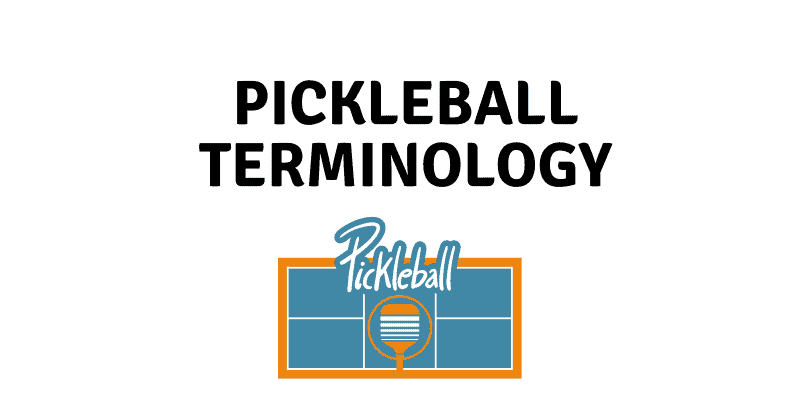
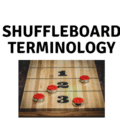
![ProLite Pickleball Paddles Reviews [2023 Update - With Our Buying Guide] 10 ProLite Pickleball Paddles Reviews [2023 Update - With Our Buying Guide]](https://realhardgames.com/wp-content/uploads/2019/07/prolite-pickleball-paddle-reviews-120x120.png)
